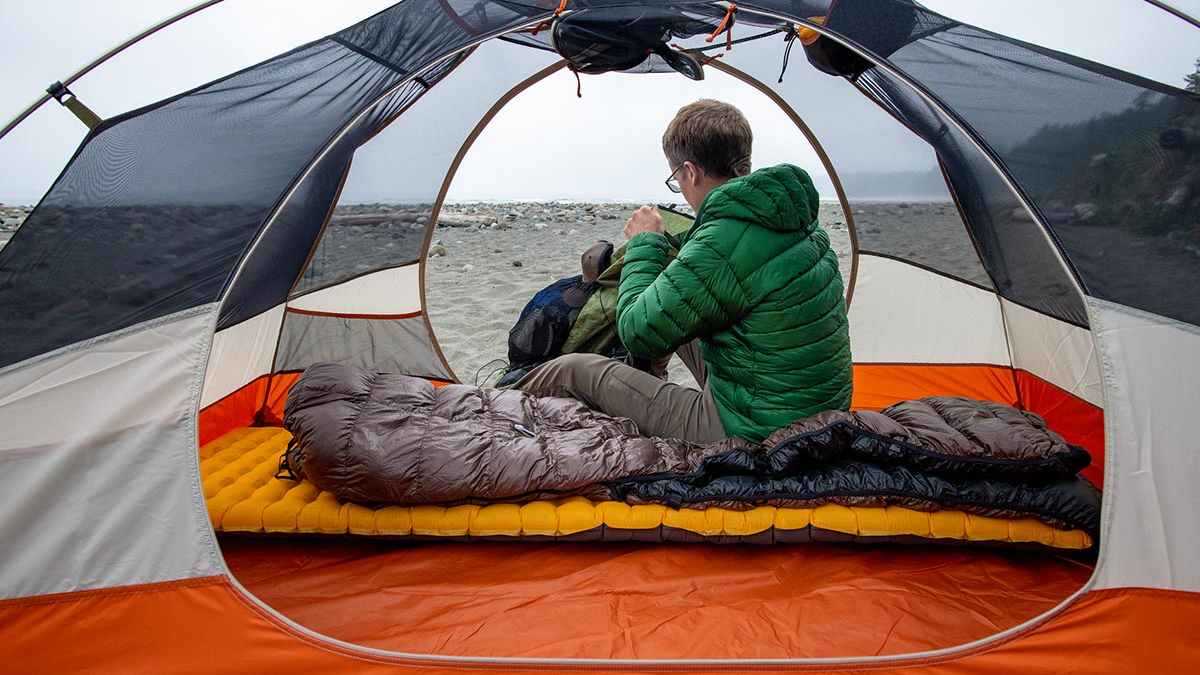When venturing into the wild, the quality of your backpacking sleeping pad can be a game changer. Providing not only a soft surface for your weary body, but also essential insulation from cold ground, the best backpacking sleeping pad can significantly enhance your outdoor experience. A well-chosen sleeping pad offers improved sleep quality, insulation, and body support, which are vital for a rejuvenating rest after a day of hiking, climbing, or simply exploring.
Contents
The Role of a Sleeping Pad in a Successful Backpacking Trip
Comfort: The Key to Rejuvenating Rest
Outdoor adventures are exhilarating, but they can also be physically demanding. After a day filled with challenges and discoveries, your body craves restful sleep. This is where a backpacking sleeping pad comes into play. By providing a comfortable and supportive surface, it paves the way for deep sleep, ensuring you wake up refreshed and ready for the next day’s escapades.
Packability and Warmth-to-Weight Ratio: Travel Light, Stay Warm
Among the backpacking sleeping pad features that outdoor enthusiasts value, packability and warmth-to-weight ratio stand out. The former makes it easier to carry the pad in your backpack, while the latter ensures that you stay warm without adding excessive weight to your gear. Both aspects play a critical role in your overall backpacking experience, as they allow for greater mobility and comfort.
Types of Sleeping Pads and Their Applications
Air Pads: Balancing Comfort and Weight
These types are highly favored among backpackers who prioritize comfort. These cushions can be inflated to your desired firmness, offering a plush sleeping surface. However, their lightweight nature does not compromise their insulation abilities, as many models incorporate insulating materials to fend off the cold. Durability is another crucial aspect. While air pads may be susceptible to punctures, many are made with strong, abrasion-resistant materials to withstand the rigors of outdoor use.
Self-Inflating Pads: A Blend of Convenience and Insulation
Self-inflating pads represent a balance between comfort and convenience. These cushions combine air and foam, providing a good level of insulation and firmness. Their weight, while generally higher than that of air variants, is still manageable for most backpackers. The inherent durability of self-inflating pads also makes them a reliable choice for extended trips or rough terrains.
Closed-Cell Foam Pads: The Virtue of Simplicity
Simplicity and durability characterize closed-cell foam pads. They’re lightweight and offer decent insulation, making them a popular choice among minimalistic backpackers and ultralight thru-hikers. Although these cushions may not offer the same level of comfort as their air-filled counterparts, their durability is second to none, capable of withstanding harsh conditions without fear of punctures or leaks.
Choosing the Best Sleeping Pad for Your Needs
Factors to Consider When You Buy a Backpacking Sleeping Pad
Several factors come into play when determining the best backpacking sleeping pad for your needs. You may need to think first before you buy backpacking sleeping pads on your journey. First, consider the type of your backpacking trip. A weekend getaway may require less durability and insulation than a multi-day, high-altitude trek. Climate conditions are another determinant. For colder environments, a pad with higher insulation (expressed as R-value) would be ideal. Your personal comfort level is crucial too. If you’re a side sleeper or have back issues, you might prefer a thicker, air-filled cushion. Lastly, your budget plays a significant role. While more expensive ones often provide superior comfort and durability, there are plenty of cost-effective options that offer good value.
Balancing Trade-offs: Comfort vs. Weight, Durability vs. Cost
The quest for the perfect sleeping pad often involves a series of trade-offs. A comfortable, thick one might be heavier, impacting your mobility on the trail. Similarly, a highly durable, feature-rich one might cost more. When you buy a backpacking sleeping pad, carefully weigh these trade-offs against your specific needs and preferences.
Tips on Proper Use and Maintenance of Your Sleeping Pad
Inflation and Deflation
Achieving Optimal Firmness Achieving the perfect firmness of your sleeping pad is paramount to enhancing your sleeping experience. When inflating, carefully adjust the air volume to find a level that comfortably supports your body weight, making slight adjustments if it feels overly firm. Prioritize comfort and adjustability. Conversely, when it’s time to deflate, ensure thorough expulsion of all air to facilitate effortless packing and minimize the pad’s size for transportation or storage.
Storage and Longevity: Keep it Clean and Dry
Maintaining proper storage practices is essential for preserving the longevity of your sleeping pad. After each expedition, diligently clean the cushion to remove any accumulated dirt, debris, or stains. Allow it to thoroughly dry before rolling it up and stowing it away. Optimal storage involves keeping the pad unrolled and semi-inflated in a dry, cool environment. This preserves its structure, functionality, and insulation properties, ensuring your stuffing remains in optimal condition for future adventures.
Repair Tips: Be Prepared for the Unexpected
Despite your best efforts, unforeseen mishaps such as punctures or leaks can occur during outdoor excursions. To mitigate the impact, always carry a repair kit specifically designed for your sleeping cushion model and familiarize yourself with basic repair techniques. Conduct regular inspections of your cushion, meticulously examining it for any signs of damage or wear. This proactive approach allows you to identify and address potential issues early on, preventing unexpected failures and ensuring a comfortable and uninterrupted sleep experience during your journeys.
Investing in the right sleeping pad is an essential aspect of a successful backpacking trip. Remember, the best backpacking sleeping pad isn’t necessarily the most expensive one; it’s the one that aligns with your comfort needs, trip requirements, and budget. Use this guide to make an informed choice, and you’ll be well on your way to countless nights of restful sleep under the stars. Happy trails

